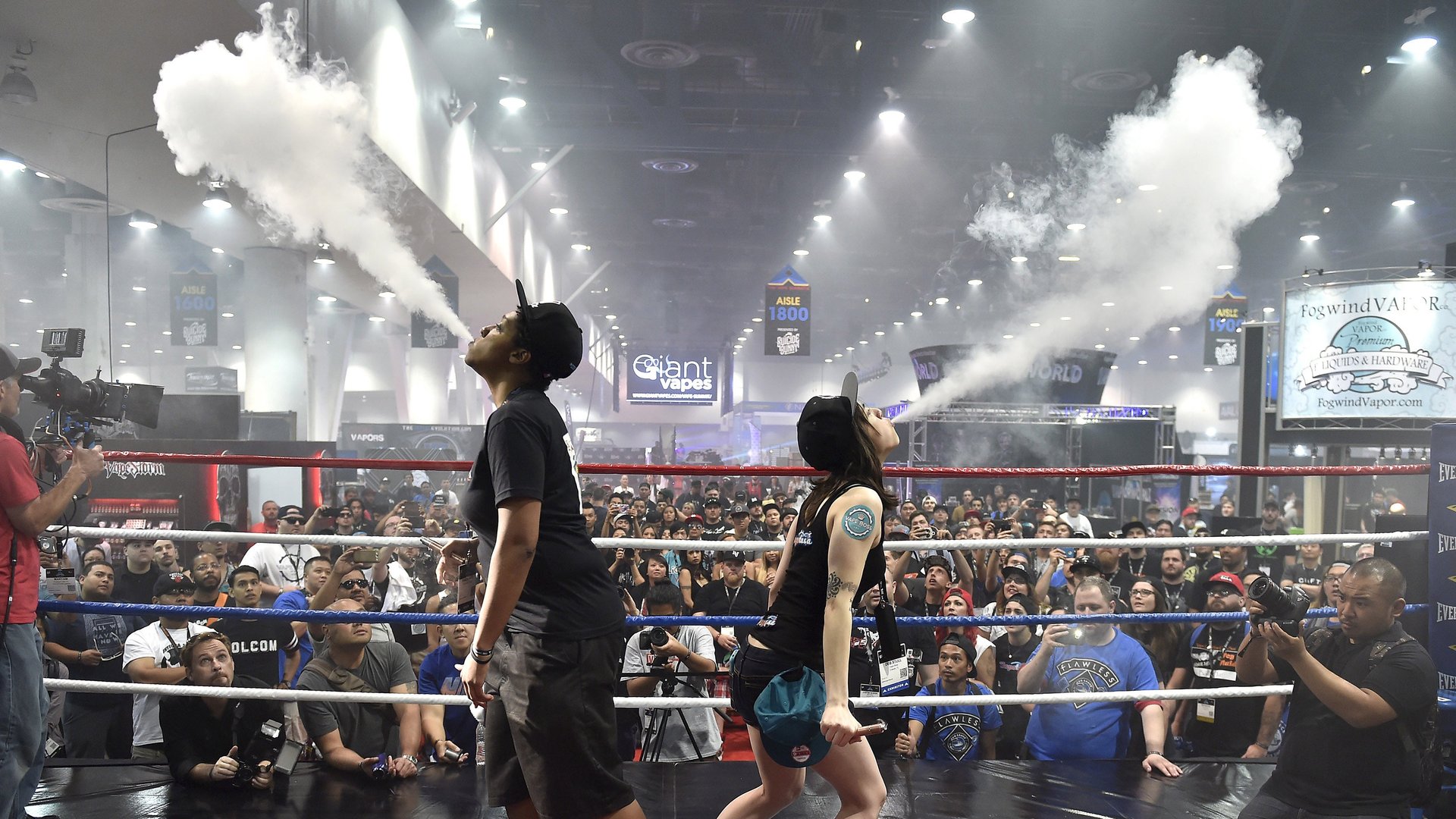What Yelp data reveal about the sudden rise of vape shops in America
This post has been corrected.


This post has been corrected.
Shops to buy and use electronic cigarettes have sprung up all across the United States. But the rise of these “vapor lounges” has gone largely unremarked upon, even as calls for tighter regulation of e-cigarettes have grown. This may be because we know almost nothing about them.
Reliable data about anything related to vaping are very difficult to come by. Unlike tobacco products, e-cigarettes are almost completely unregulated, so few federal agencies collect information about them. Vape shops aren’t even a recognized category in the business classification codes used by the US Census Bureau.
This probably explains why the number of “tobacco shops” has doubled over 15 years, by the agency’s definition, even as the percentage of Americans who smoke declined by a fifth:
To get a better sense of vaping’s growth, Quartz turned to Yelp. The business ratings site provided the locations of 10,591 stores that are identified as “vape shops” in their database. That works out to about 2.7 vape shops for every bowling alley in the US and about four for every comic book store. This rapid growth in physical locations is especially impressive because a third of all of vapor products are bought online, according to Euromonitor research.
The Yelp data show that western states are the center of of the vape business. Nevada has by far the most vape stores per capita, with 6.7 for every 100,000 residents. The vast majority of these are in Las Vegas, which frequently hosts vaping trade shows and conferences, such as Vapefest 2016. Hawaii is the only other state with more than six stores per 100,000 residents. Oklahoma, Florida and California round out the top five states.
It’s somewhat mysterious that the west coast is so keen to blow big clouds of nicotine-laced water vapor. Centers for Disease Control research has shown that e-cigarette users are much more likely to be current or former smokers. West coast states, California in particular, have some of the nation’s lowest rates of cigarette usage. Perhaps health-conscious West coast residents are indulging a long secret desire to light up?
One probable reason for the smaller numbers of vape stores in some places is the passage of state laws regulating them. Four of the states with the fewest vape stores require a license for over-the-counter sales of e-cigarettes—Arkansas, Indiana, Iowa, and Wisconsin. None of the states with highest concentrations of vape stores have such a law. (pdf)
We may not have to wait long for better information about vape stores. It is likely that this year president Barack Obama will establish regulations that bring e-cigarettes under the jurisdiction of the Food and Drug Administration—a move the majority of Americans support. The Federal Trade Commission is also set to begin studying how e-cigarettes are marketed and sold. All this additional scrutiny will undoubtedly lead to a better understanding of where and how these stores operate.
Correction (7:40am ET): This article previously reported that Nevada had passed a tax on e-cigarettes. However, that law was revised to exempt e-cigarettes before it was passed.